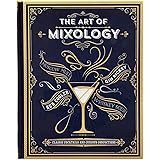The question of whether milk is a nutritional powerhouse or a problematic dietary choice has become incredibly complex. For many, milk evokes images of childhood health and strong bones, while for others, it raises concerns about allergies, ethical considerations, and environmental impact. The accompanying video provides an excellent overview of this multifaceted debate, prompting a deeper dive into the science, history, and societal implications of milk consumption.
Navigating the conflicting information requires a balanced perspective, moving beyond simple black-and-white pronouncements. This article expands on the video’s insights, offering a comprehensive look at milk’s journey from an evolutionary advantage to a modern dietary dilemma, exploring its health implications, environmental footprint, and the burgeoning world of alternatives.
The Long History of Milk Consumption
For most of human history, milk was exclusively consumed during infancy, a vital source of nourishment directly from mothers. The human digestive system, like that of other mammals, is naturally equipped to process milk sugar, lactose, during this critical growth phase, thanks to the enzyme lactase.
Around 11,000 years ago, a pivotal shift occurred. Our ancestors, transitioning from nomadic hunter-gatherer lifestyles to settled agricultural communities, began domesticating animals like goats, sheep, and cattle. This revolutionary development introduced a new, abundant food source: animal milk. Imagine the strategic advantage communities gained by converting otherwise unpalatable plant matter into calorie-rich, nutritious dairy products, especially during times of scarcity.
This access to milk led to a significant evolutionary adaptation. Through natural selection, populations that continued to produce lactase into adulthood gained a survival edge. These individuals could digest lactose, unlocking a new and consistent food supply. This genetic mutation, known as lactase persistence, spread through dairy-farming communities, fundamentally changing human diets and genetic makeup over thousands of years.
Lactose Intolerance Across the Globe
Despite the evolutionary advantage, lactase persistence is not a universal trait. Globally, approximately 65% of the population experiences a decline in lactase production after infancy, rendering them unable to efficiently digest lactose. This condition, known as lactose intolerance, means consuming more than about 150 milliliters of milk per day can lead to digestive discomfort.
The prevalence of lactose intolerance varies dramatically worldwide. In some East Asian communities, for example, rates can soar up to 90%, reflecting a historical lack of exposure to dairy farming. Conversely, in Northern Europe and parts of North America, where dairy farming has been a cornerstone of agriculture for millennia, lactose intolerance rates are remarkably low. This uneven distribution highlights the powerful role of natural selection and migration in shaping human genetic traits based on environmental and dietary factors.
Unpacking Milk’s Health Effects
The health impact of milk is perhaps the most contentious aspect of the debate. Claims range from milk being essential for bone health to accusations of it causing cancer and cardiovascular disease. Sifting through these assertions requires a look at current scientific evidence.
Milk and Cancer Risk
Early studies on milk and cancer sometimes suggested links to an increased risk of breast, colon, and prostate cancers. However, meta-analyses, which combine data from multiple studies for a more robust conclusion, generally find no significant impact of milk consumption on overall cancer risk. In fact, calcium, abundant in milk, might even offer a protective effect against colon cancer, though it’s unclear if this benefit is specific to milk-derived calcium or calcium in general.
The only area where some consistent, albeit inconsistent, association has been observed is with prostate cancer. Some studies indicate a potential increased risk for men consuming more than 1.25 liters of milk daily. However, other research contradicts this, showing no effect. The consensus among researchers is that for typical consumption levels—between 100 to 250 milliliters of milk per day—cancer is generally not a concern.
Cardiovascular Health and Bone Strength
When it comes to heart disease, stroke, and overall mortality, meta-analyses have found no discernible impact from milk or dairy products. There are even some intriguing suggestions that high blood pressure might be less common in individuals with higher dairy intake, though more robust evidence is needed to confirm this definitively.
The relationship between milk and bone health is more nuanced. While milk is famously rich in calcium, essential for strong bones, many studies on adults have found neither overwhelmingly positive nor negative effects on bone density or fracture risk. It appears that while calcium is crucial, its source and the overall dietary context play a significant role.
Chemicals, Hormones, and Allergies
Concerns about harmful substances like pesticides, antibiotics, and hormones in milk are common. However, regulations in most developed countries strictly limit the permissible amounts of pesticides and antibiotics, ensuring that milk exceeding these thresholds does not reach consumers. Imagine a system designed to protect public health, where safety is paramount.
Hormones are naturally present in milk, but in extremely low concentrations. To consume a hormonal dose equivalent to a birth control pill, one would need to drink approximately 5,000 liters of milk. Furthermore, the human digestive system is highly efficient at breaking down most hormones before they can exert a significant effect on the body, which is why many medications are specially coated to bypass this process.
Genuine health concerns around milk largely revolve around allergies and lactose intolerance. Dairy allergies, particularly prevalent in children (affecting about 1 in 18 kids in Germany, for instance), can cause severe reactions but often improve or disappear with age. Lactose intolerance, as discussed, leads to digestive discomfort. Beyond these, skimmed milk has been statistically linked to an increased rate of acne, with one study showing a 24% increase, suggesting specific components or processing methods might contribute to certain skin conditions.
The Nutritional Profile of Milk
Despite the controversies, milk remains a nutrient-dense food. Whether it comes from mothers, cows, goats, or camels, it provides essential macronutrients—fats, proteins, and carbohydrates—along with numerous micronutrients like calcium, phosphorus, potassium, and B vitamins, including B12.
In regions grappling with food insecurity, milk can be a critical asset, contributing significantly to calorie intake and potentially lowering child mortality rates. For individuals in developed nations who are neither allergic nor lactose intolerant, milk can still be a valuable part of a healthy diet. It is an excellent source of calcium, particularly beneficial for growing children, and for vegetarians, it serves as a reliable source of vitamin B12, which is often challenging to obtain from plant-based foods alone.
However, it is crucial to remember that milk is not a magic bullet, nor is it indispensable. You do not need to drink milk to be healthy, as many other foods can provide similar nutritional benefits. Furthermore, milk is a “power food” rich in calories; excessive consumption, especially of flavored varieties like chocolate milk (which are more akin to sugary beverages than healthy snacks), can contribute to weight gain. It is definitely not a substitute for water.
The Environmental and Ethical Cost of Dairy
Beyond personal health, the production of milk, particularly in industrialized systems, carries significant environmental and ethical burdens. Dairy cattle, like other grazing animals, require vast amounts of land and resources. Approximately 33% of global cropland is dedicated to feeding livestock, including dairy cattle, amounting to 1.4 billion tons of feed annually. This enormous footprint contributes substantially to deforestation, habitat loss, and water usage.
The dairy industry is also a major contributor to greenhouse gas emissions. While the carbon footprint of dairy products has seen some decline since 1990 due to efficiencies, it still accounts for about 3% of all global greenhouse gas emissions. Imagine that scale: this is even more than the emissions from all airplanes combined, highlighting the immense environmental impact of conventional dairy farming.
Ethical concerns are equally pressing. Much of the milk consumed today originates from factory farms, where cows are often subjected to repeated artificial insemination, separated from their calves shortly after birth, and culled once their productivity declines. This system raises profound questions about animal welfare and the moral implications of our food choices.
Exploring Milk Alternatives and The Future of Dairy
Given the health, environmental, and ethical considerations surrounding traditional dairy, many consumers are turning to alternatives. Plant-based milks have surged in popularity, offering a diverse range of options. In terms of protein levels and overall nutritional value, soy milk often stands out as the closest comparison to cow milk. Other alternatives, such as almond, oat, or rice milk, frequently require artificial enrichment to match the vitamin and calcium content found in dairy.
The environmental footprint of these alternatives is generally much lower than that of animal milk. Many plant-based options use significantly less land, water, and energy to produce. To minimize negative environmental impact, the best choice is often a regional milk alternative, reducing transportation emissions and supporting local sustainable practices.
An exciting development on the horizon is lab-grown milk. Several startups are leveraging precision fermentation technology, often using genetically modified bacteria, to produce non-animal milk that is nutritionally identical to conventional dairy. This innovative approach yields casein and whey protein, key ingredients that give dairy its characteristic taste and texture, allowing for the creation of dairy-like cheeses—a challenge for current plant-based options. Imagine a future where the rich taste and texture of milk can be enjoyed without the environmental and ethical compromises.











